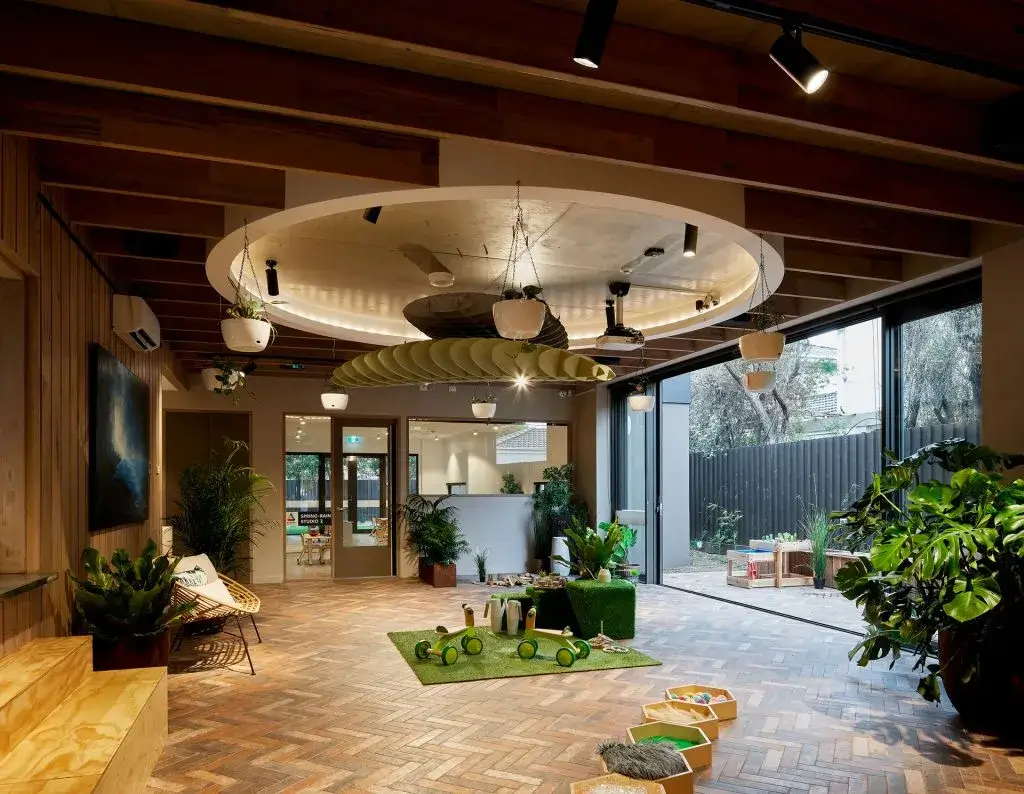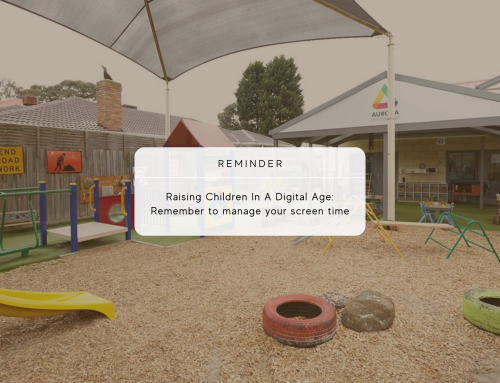For many, ‘Biophilia’ is an unfamiliar word. We aim to change that for those who cross Aurora Early Education’s path.
The word biophilia in essence means “Love of Nature”. The innate connection we humans have with nature is what is known as biophilia. And in early childhood, this instinct is fundamental to nurture.
Biophilia supports the Aurora Philosophy of “Connect, Care, and Create” and is incorporated in our childcare centres environment to enhance an individual’s overall experience in the space. Even though we do not live in wild or pastoral environments, we still seek experiences with nature and natural elements for our own well-being, which is why more spaces need to be created with biophilic design. At Aurora, all our spaces invariably integrate biophilic design elements to enrich the physical and mental well-being of our staff, children and their families.
Outdoor Spaces Physical and Mental Wellbeing
Well-being and overall development directly improve from connecting with nature as it advances concentration, mindfulness, as well as reduces anxiety and stress levels.
“The entire centre incorporates biophilic design in both its structural and design elements to enrich our children’s love and appreciation for nature, and enhance their physical and mental wellbeing,” says Sheela Edwards, CEO and Co-Founder of Aurora Early Education. “Biophilia is an integral part of the Aurora curriculum, and nature is one of our Key Focus Areas.”
Exposure to natural light, real plants, and timber finishes in a large lawn inherently invites children to feel free and cheerful.
Biophilia in Design
Our Piazza has been designed through the lens of a child based on biophilic design principles that focus on bringing the outdoors inside. Plants are used within the space to create a seamless transition from out to in.
Glass doors are used throughout the centre to encourage children to observe nature by watching plants sway gently with the wind or rainfall from the moving clouds.
Circle-shaped elements are incorporated throughout because circles represent the eternal whole and the circular designs we find in nature. These elements are inadvertently observed and ingrained in infants’ and toddlers’ minds and eventually grow into a deeper ideology in kindergarten.
A Space for Harmony & Safety
In every culture, circular designs commonly represent the sun, the earth, the moon, the universe and other celestial objects. Circles in nature have free movement as they can roll, and they give a sense of fullness and love. Their movement suggests energy and power, and their completeness suggests infinity, unity and harmony.
Harmony is often also embraced at Aurora Doncaster’s fish tank which resides in our foyer and is one of our most-loved areas.
“The fish tank is a place that connects the children to nature and creates a calming effect which is most beneficial on pick-ups and drop-offs. It is a key feature of our building design integrating children’s exposure to nature on a daily basis in a captivating way. Beauty is a strong element of our curriculum and the fish tank brings an element of magnificence, harmony, and peacefulness. The positioning of our fish tank is in an area that is central within the building which creates a beautiful Environment to facilitate meaningful connections with families and staff,” says Simone Edwards, COO and Co-Founder of Aurora Early Education.
Such naturistic elements promote the feeling of safety and comfort in a space for everyone. Parents want to see a safe and positive kindergarten environment for their children to thrive in. This is why it is very important for a centre to have space for both indoor and outdoor play. Children should be able to see and feel natural sunlight and greenery and have the freedom to go to those spaces at any time safely. The spaces should be well thought out and designed to make children feel energized and yet calm at the same time.





